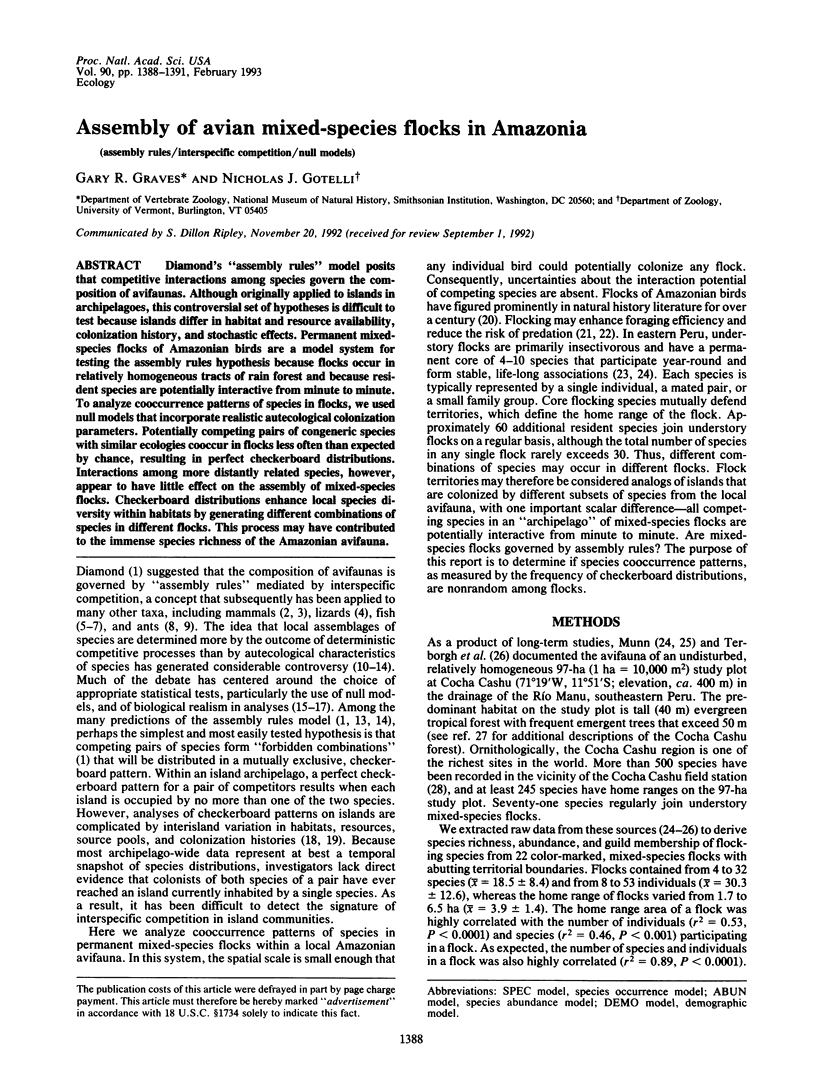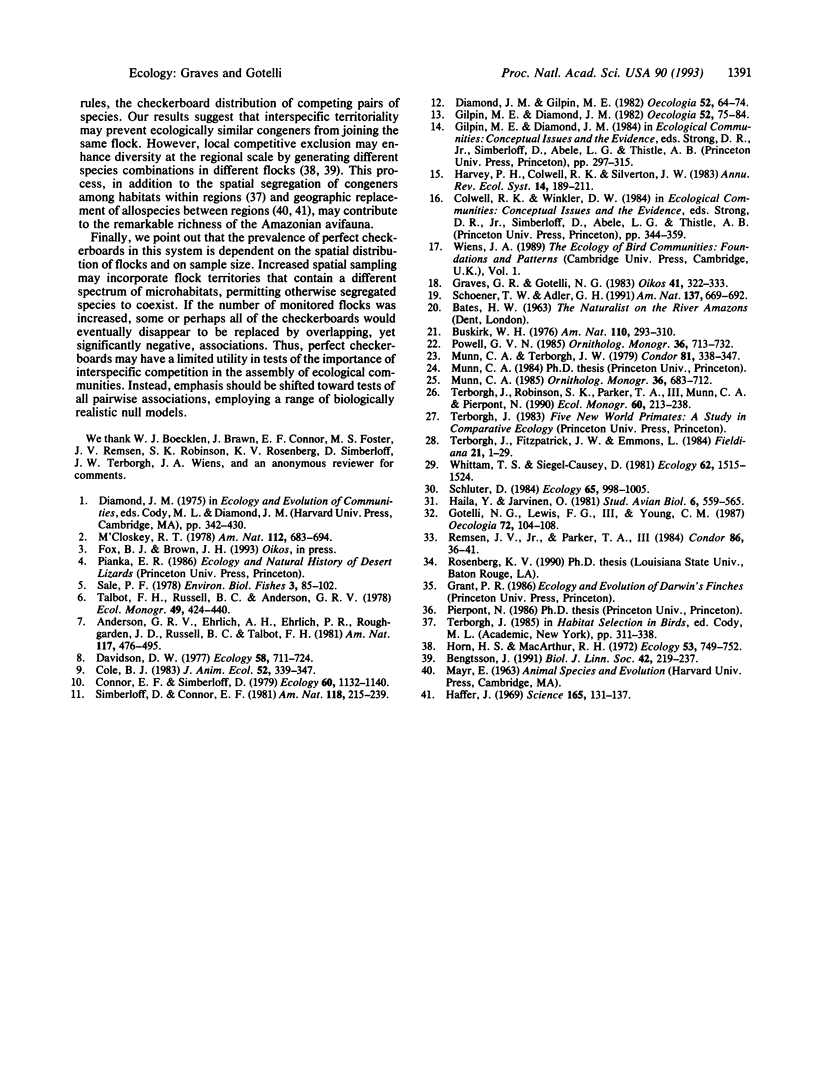Abstract
Diamond's "assembly rules" model posits that competitive interactions among species govern the composition of avifaunas. Although originally applied to islands in archipelagoes, this controversial set of hypotheses is difficult to test because islands differ in habitat and resource availability, colonization history, and stochastic effects. Permanent mixed-species flocks of Amazonian birds are a model system for testing the assembly rules hypothesis because flocks occur in relatively homogeneous tracts of rain forest and because resident species are potentially interactive from minute to minute. To analyze cooccurrence patterns of species in flocks, we used null models that incorporate realistic autecological colonization parameters. Potentially competing pairs of congeneric species with similar ecologies cooccur in flocks less often than expected by chance, resulting in perfect checkerboard distributions. Interactions among more distantly related species, however, appear to have little effect on the assembly of mixed-species flocks. Checkerboard distributions enhance local species diversity within habitats by generating different combinations of species in different flocks. This process may have contributed to the immense species richness of the Amazonian avifauna.
Full text
PDF



Selected References
These references are in PubMed. This may not be the complete list of references from this article.
- Haffer J. Speciation in amazonian forest birds. Science. 1969 Jul 11;165(3889):131–137. doi: 10.1126/science.165.3889.131. [DOI] [PubMed] [Google Scholar]


